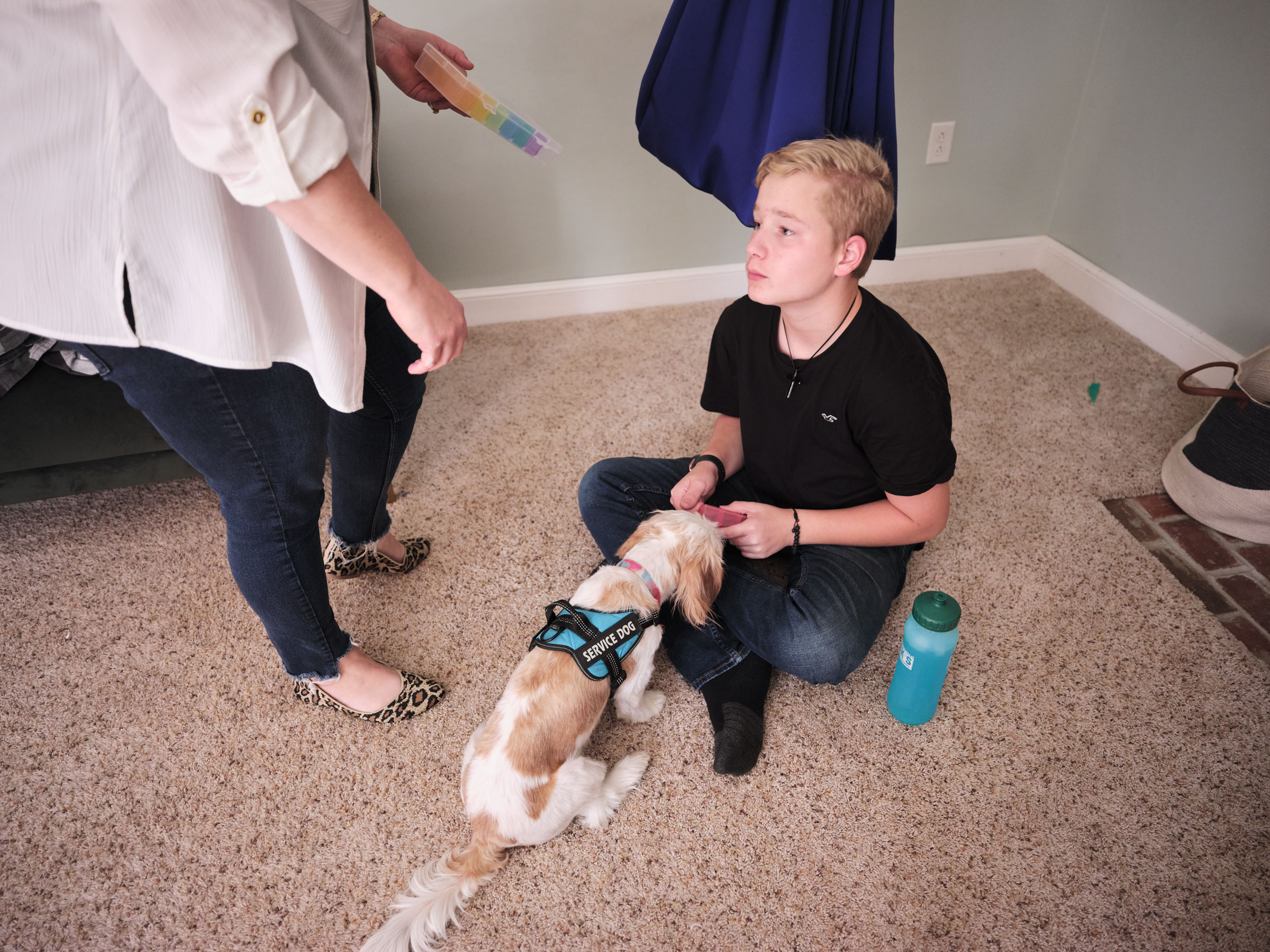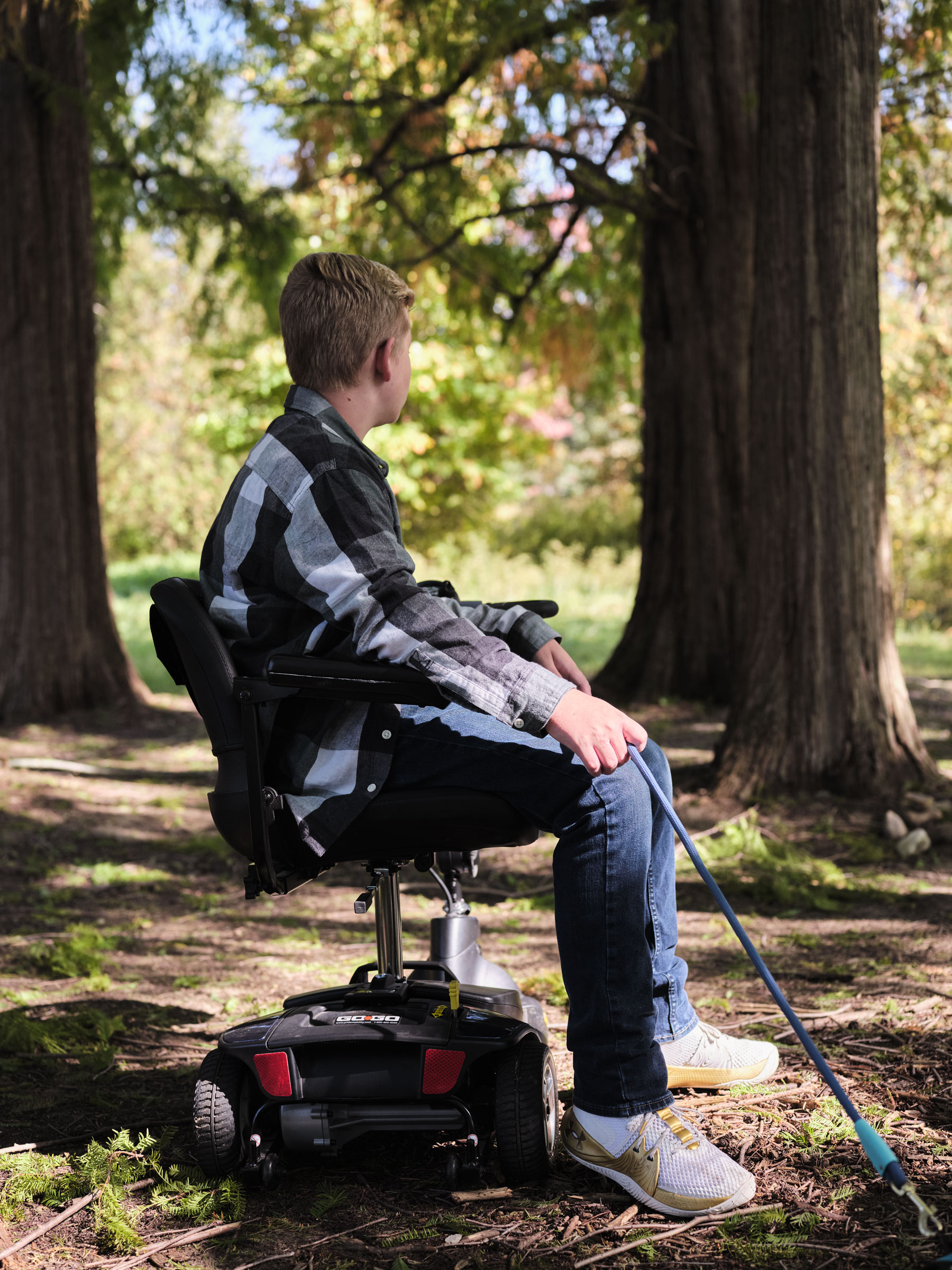Kids with Long COVID – Ayden Varno was outside doing chores one day in April 2021 when he felt an excruciating pain, like “a hot knife was being stabbed into my back multiple times,” he says.
Ayden, who is now 13, spent most of the next eight months in pain so extreme he couldn’t walk unassisted, sleep through the night, or follow a full school curriculum. He also suffered frequent non-epileptic seizures related to his pain. Doctors near his home in Ohio had no idea why Ayden was in so much pain or what to do about it; some suggested he was having a psychotic episode or being abused at home, says his mother, Lynda Varno. The family’s first lead came in July 2021, after they drove 14 hours to a pediatric hospital in Philadelphia. A doctor there mentioned that the pandemic seemed to be driving an increase in pain disorders, giving the Varnos a clue that COVID-19 might be to blame for Ayden’s pain. When, in December 2021, a clinician at Cleveland’s Rainbow Babies and Children’s Hospital finally diagnosed Ayden with Long COVID, both he and his mother broke down crying with relief.
“We finally had a physician who believed us, who supported us, who didn’t think that my husband and I did something terrible to our child,” Varno says.
Families across the country are on similar odysseys for pediatric Long COVID care. While research is accumulating and doctors are learning more, multiple families interviewed by TIME say they faced ignorance, dismissal, or disrespect from doctors, leaving desperate parents to fight for their children’s recovery themselves.
“I’ve done more medical research than Johns Hopkins in the last two years,” jokes Jennifer Cira, who has Long COVID herself and is mother to a 12-year-old girl and 9-year-old boy with the condition. “I have gotten zero support [from the medical system]…We’ve decided to not listen to anyone and just do our own thing now.” Cira has tried everything from melatonin supplements and meditation to massage therapy and Epsom-salt baths to help ease her kids’ symptoms, but she’s yet to find something that cures them entirely.
COVID-19 is often described as essentially harmless to children, and it’s true that young people have extremely low odds of dying or becoming hospitalized after catching the virus. But Long COVID can and does affect children even after mild initial cases. It’s just not clear exactly how often it does.
One recent study from researchers in Germany compared children and adolescents who’d had COVID-19 to children who’d been exposed to the virus in their homes, but ultimately tested negative. With the exception of girls ages 14 to 18, COVID-positive kids weren’t significantly more likely to report moderate or severe persistent symptoms a year later. That finding should not discount the fact that some children develop long-lasting symptoms after mild cases, but it suggests that the percentage who experience these complications may not be massive.
Other studies have found that around 25% of kids who contract COVID-19 have symptoms for at least four weeks. That’s shy of the threshold at which many experts would diagnose Long COVID—three months of otherwise unexplained symptoms—but longer than is typically expected of a “mild” disease. And among kids who were sick enough to be hospitalized with COVID-19, about 25% still had symptoms up to four months later, according to one recent study.
Even if the exact prevalence isn’t known, “the takeaway is that this is a real problem,” says Dr. Daniel Blatt, an infectious-disease physician who works in the post-COVID clinic at Norton Children’s Hospital in Kentucky. “There are a lot of kids out there who are suffering.”

One of the family’s dogs began to alert Ayden to oncoming seizures. The dog has become Ayden’s service dog and constant companion.
Fatigue, sleep issues, and mood disorders are the most common Long COVID symptoms for kids, research suggests, but that’s far from an exhaustive list. Many children experience gastrointestinal issues, chronic pain, crashes after physical or mental effort (known as post-exertional malaise), brain fog, nervous system dysfunction, and more.
These symptoms can turn a child’s life upside down. “The worst part is not being able to do things I used to do,” says Darya Raker, 13, who has had Long COVID symptoms including headaches and stomachaches, brain fog, dizziness, post-exertional malaise, and insomnia since February. (She caught COVID-19 and developed flu-like symptoms in December 2021.) Darya often doesn’t feel well enough to see her friends or play her favorite sport, water polo. Her school has tried to accommodate her with a modified schedule, but Darya still frequently has to miss class because she doesn’t feel well or has doctor’s appointments, says her mother, Elham Raker.
There are more than a dozen pediatric Long COVID clinics scattered across the U.S., according to a directory kept by the support group Long COVID Families, but getting into them isn’t always easy. Blatt says his team tries to see every patient within a week of receiving their referral, but other centers have much longer wait times.
The pediatric Long COVID clinic at Children’s National Hospital in Washington, D.C., has a waitlist three to four months long, says director Dr. Alexandra Yonts. That’s “problematic,” Yonts says, but it’s the best she and her small team can do without additional funding. As it is, they see Long COVID patients just one afternoon per week, and only because all the clinicians happened to be free from other responsibilities during that window of time.
Even specialty clinics are still learning a lot about pediatric Long COVID, which has been researched much less than adult Long COVID. Among adults, many researchers now believe the condition occurs either because the virus lingers in the body or sparks an abnormal immune response that can last much longer than an acute case. But “there really hasn’t been a lot of strong data to tell us what an organic or biologic cause of Long COVID is in children,” Blatt says.
Pediatricians often say that kids are not just little adults; their developing bodies and immune systems often respond to pathogens differently than adults’ do. For that reason, research into the triggers of adult Long COVID isn’t always directly applicable to kids. Still, there are some clues about why some kids develop lingering complications.
Some studies suggest that children with preexisting conditions—particularly allergic diseases like eczema, asthma, and food allergies—are at heightened risk of Long COVID. Girls seem more likely to develop the condition than boys, and older children seem to be at higher risk than babies and toddlers. Some people may be genetically predisposed to the condition, research suggests, and Yonts confirms that she has treated children whose parents also have Long COVID. That’s not proof that susceptibility to Long COVID is hereditary, but it raises the possibility that it is.
Even without knowing exactly what causes Long COVID in kids, specific symptoms—like chronic pain, fatigue, or digestive issues—can be treated, Yonts says. But for more patients to get that care, all doctors need to understand the condition, not just specialists. Yonts says she’s working to educate other doctors about best practices, but there’s a long way to go.

Ayden takes nine to 12 pills three times a day to manage pain, frequent seizures, and other symptoms of Long COVID.
Sarah Lamb has been trying to find a doctor who can help her 10-year-old son, Adam, for more than six months. He’s lived with Long COVID symptoms including gastrointestinal issues, fatigue, and widespread inflammation since early 2022. “Every doctor we’ve seen—from cardiology to GI to his pediatrician—they all say, ‘We don’t know,’” Lamb says. “Almost everything I’ve learned that has helped him has actually not come from his doctors. It’s come from Facebook [support] groups.” Pacing—an energy-management strategy that involves alternating activity and rest—has helped his fatigue, Lamb says, and taking over-the-counter heartburn drugs seems to have helped bring back some of his energy and appetite.
Raker has also struggled to get adequate care for her daughter, even though she and her husband are both physicians. Frustrated by doctors who don’t understand the condition, the Rakers decided to fly from their home in California to Colorado’s National Jewish Health for Kids COVID-19 Assessment Program—an option Raker knows not every family has, but one she felt was necessary for hers. Since insurance doesn’t cover the clinic’s care, the Rakers are paying for it with money they’d saved for Darya’s bat mitzvah, which had to be canceled due to her health.
“I really wasn’t okay with the idea of my daughter [only] being able to sit up in bed and tolerate life,” Raker says. “I wanted her to be back. I want her to be her sassy teenage self, doing sports and not being exhausted by taking a shower.”
National Jewish Health takes an intensive approach to treating kids with Long COVID, says program director Dr. Nathan Rabinovitch. For a week or longer, kids meet with numerous specialists for assessments and treatment planning. The clinic only sees one or two patients a week, so its approach isn’t something that could be easily duplicated at large scale—but Rabinovitch says they’ve had success with customized treatment plans. Despite these positive outcomes, Rabinovitch remains concerned about the future of his patients.
“How much of this is transient, and how much of this is permanent?” Rabinovitch asks. “How much of what happens as a teenager or as a kid is going to continue into adulthood?”
That question haunts Jenessa, whose 9-year-old daughter has had Long COVID symptoms for about five months and who asked to use only her first name to preserve her family’s privacy. Due to symptoms including post-exertional malaise, dizziness, nausea, stomach pain, rapid heart rate, headaches, and cognitive dysfunction, her daughter can only handle three hours of school per day and has had to eliminate extracurricular activities.
Jenessa’s “worst fear,” she says, is that her daughter will never get better. She tries not to think beyond the present—in part because her daughter’s condition varies drastically from one day to the next—but says it’s hard not to worry about Long COVID sticking around forever. “It’s a very real possibility, and it’s terrifying,” she says. “As a parent, you’re constantly having to suck down this terror that you have about what’s going on. You can’t really process it because you’re trying to function and not completely freak out your child.”
There are long-haulers who remain sick more than two years after getting infected, and finding treatments for them is critical. But Yonts says lots of kids get better within a year—sometimes even without formal treatment. “It’s on the rare side that they have zero improvement over time,” she says.

Ayden often uses a motorized chair to preserve energy.
Ayden Varno can attest to that. After being essentially disabled by his pain for almost a year, his symptoms have improved since entering Rainbow Babies’ post-COVID clinic and trying a mixture of physical therapy, acupuncture, massage, sleep and nerve-pain medication, and supplements. Though his mobility is still limited and he struggles with brain fog, fatigue, and seizures, he’s back at school on a modified schedule and able to be active for a few hours at a time and see friends.
“Just keep pushing, and look on the bright side,” Ayden says. “Don’t look at the negative side. There’s always hope.”










